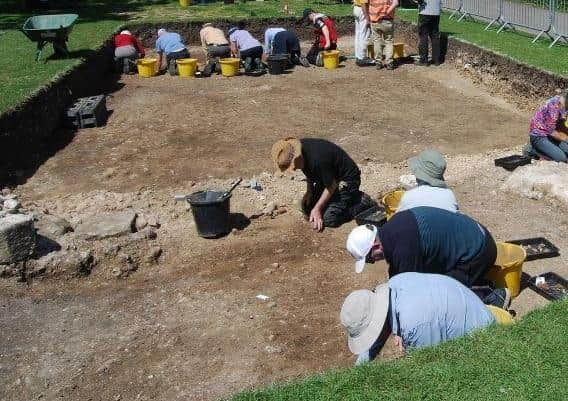Part of ancient castle and brewery found under Chichester park
and live on Freeview channel 276
A two week dig in Priory Park, just south of the bowling green, unveiled an ancient ditch that surrounded the park's Norman castle as well as a 'masonry structure'.
The works were led by James Kenny, chief archaeology officer for Chichester District Council, who teamed up with the Chichester and District Archaeology Society (CDAS)and also found the centuries-old foundations of the walls associated with a building that was part of a medieval Franciscan Friary that stood on the site, including a buttress on the south-east corner of the building.
Advertisement
Hide AdAdvertisement
Hide AdJames said: "We carried out geophysical surveys on the site so we had a good idea of where to find the walls of the friary buildings.


"What is remarkable is that the wall was placed right hard up against the outside edge of an enormous ditch which is almost certainly the ditch created for the motte.
"The castle was probably built in 1066 or 1067 directly after the Norman Invasion by Earl Roger Montgomery who was one of the most important Norman barons, in charge of most of what would become West Sussex.
The friary existed between the late-13th to the mid-16th centuries and would have comprised a series of buildings including the Friary church, a dormitory, refectory, library, a cloister with wash house, a guest house and even a brewery.
Advertisement
Hide AdAdvertisement
Hide AdFollowing the dissolution of the monasteries, in the late 1530s, the Friary church became a council house and the rest of the buildings were converted to a mansion house. This was demolished in the mid-19th century when the area was transformed into Priory Park.
Only a small part of the motte remains today, visible in the north west of the park, but back then it would have been a significant structure - four or five times bigger than it is today - and probably comparable in size to the one at Arundel Castle. The material from the ditch was used to build the motte, which was intended to intimidate the urban English population and to dissuade them from rebelling against the new Norman lords.